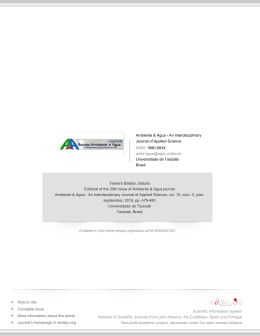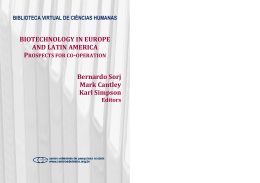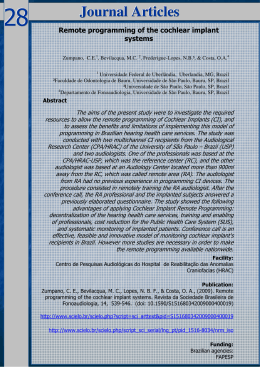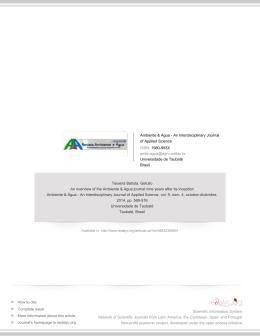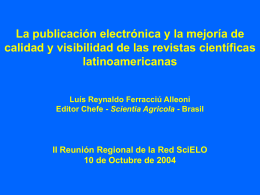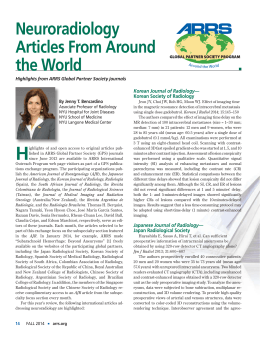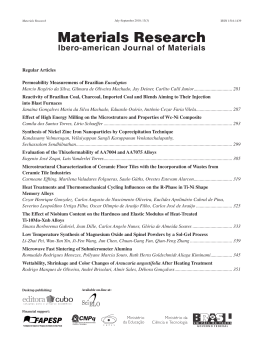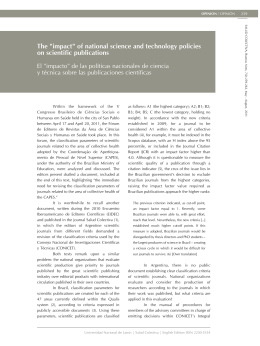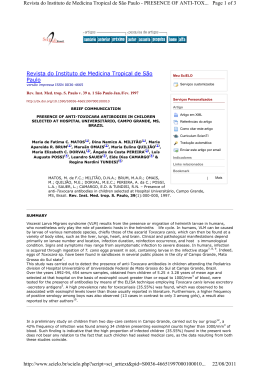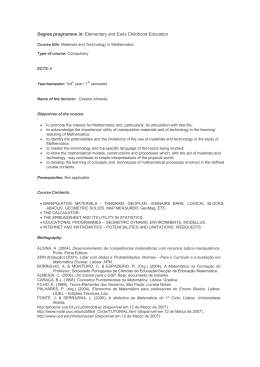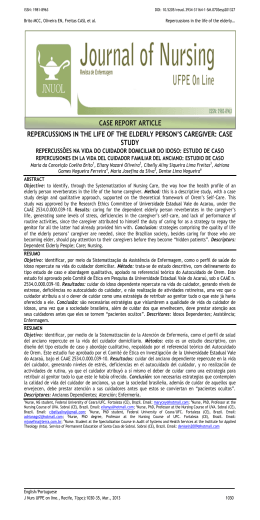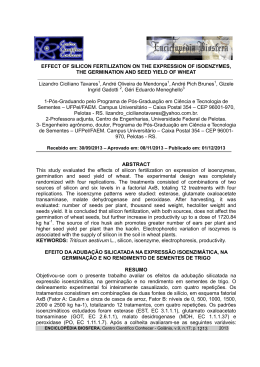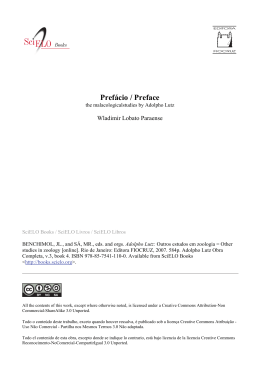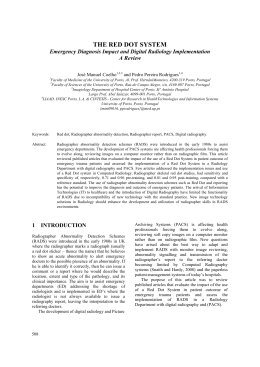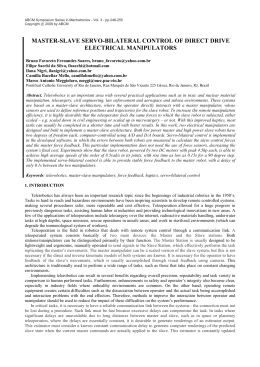RADIOPROTECTION: WHAT RADIOLOGY RESIDENTS THINK ABOUT IT? Pereira, Aline Garcia Master Student, UFSC, Brazil Vergara, Lizandra Garcia Lupi Phd,UFSC, Brazil Introduction: In medical practice the formulation of many diagnoses is made with laboratory tests, among which are the X-rays exam. It is known that the diagnostic radiology is one way where professionals are more exposed (Navarro et al. 2008; Navarro et al. 2010; Soares et al. 2011; Leytan et al. 2014; Madrigano et al. 2014) and which although quite debated in the scientific community, the principles of radiation protection still have peculiarities that impose limitations of the ergonomic point of view in the radiology, such as failure to comply with legislation and lack of knowledge about radiological protection of professional radiology (Flor et al. 2013; Leytan et al. 2014). The training of radiology residents, in the case of occupational exposure to ionizing radiation, the principles of radiation protection are present, and the reflection on professional knowledge is very important. This study aims to evaluate the knowledge of residents in radiology on radioprotection. Method: The study is descriptive-cross, and for its realization were interviewed 15 radiology residents (Florianópolis and Curitiba - Brazil) through a semi-structured questionnaire. Later, the data were analyzed by content analysis ergonomic tool with the help of lexical Software SPHINX Brazil. Results: With regard to principles, all professionals spoke about limiting the dose, but the item justification and optimization were only approached by 33.33% of the residents. Regarding the dose minimization factors (time, distance and barrier), most associated term was Garments of radiological protection, and revealed that 94% of the professionals were aware about the models of radiological protective clothing as well as its function and importance. When it comes to legislation, 86.7% of residents reported ignorance about the Brazilian legislation (Portaria 453/98). Discussion: Radiological protection is a fundamental competence in radiology, mainly because it is the safety of the professional and the patient. Its negligence may result in repeat the tests, which contributes to unnecessary doses for both the professional and the patient (Madrigano et al. 2014), as well as financial costs. Lack of knowledge of residents in radiology about the Brazilian legislation is a matter of concern because Portaria 453/98 is the brazilian guideline for radiation protection, and its provide the use of X-rays at the national level. Keywords: radioprotection; radiology resident; content analysis. References: Brasil. Ministério da Saúde. Secretaria de Vigilância Sanitária. Diretrizes de Proteção Radiológica em Radiodiagnóstico Médico e Odontológico: Portaria nº 453, de 1º de junho de 1998. Diário Oficial da União 1998; 2 jun. Flôr Rita de Cássia, Gelbcke Francine Lima. Radiation protection and the attitude of nursing staff in a cardiac catherization laboratory. Texto contexto - enferm. [serial on the Internet]. 2013 June [cited 2014 Nov 17] ; 22( 2 ): 416-422. Available from: http://www.scielo.br/scielo.php?script=sci_arttext&pid=S0104-07072013000200018&lng=en. http://dx.doi.org/10.1590/S0104-07072013000200018. Leyton Fernando, Canevaro Lucia, Dourado Adriano, Castello Helio, Bacelar Alexandre, Navarro Marcus Teixeira et al . Riscos da Radiação X e a Importância da Proteção Radiológica na Cardiologia Intervencionista: Uma Revisão Sistemática. Rev. Bras. Cardiol. Invasiva [periódico na Internet]. 2014 Mar [citado 2014 Nov 17] ; 22( 1 ): 87-98. Disponível em: http://www.scielo.br/scielo.php?script=sci_arttext&pid=S2179-83972014000100087&lng=pt. http://dx.doi.org/10.1590/0104-1843000000015. Madrigano Renata Rodrigues, Abrão Karen Cristine, Puchnick Andrea, Regacini Rodrigo. Evaluation of non-radiologist physicians' knowledge on aspects related to ionizing radiation in imaging. Radiol Bras [periódico na Internet]. 2014 Ago [citado 2014 Nov 17] ; 47( 4 ): 210-216. Disponível em: http://www.scielo.br/scielo.php?script=sci_arttext&pid=S0100-39842014000400006&lng=pt. http://dx.doi.org/10.1590/0100-3984.2013.1840. Navarro Marcus Vinicius Teixeira, Leite Handerson Jorge Dourado, Alexandrino Josemir da Cruz, Costa Ediná Alves. Control of health risks in radiodiagnosis: a historic approach. Hist. cienc. saudeManguinhos [serial on the Internet]. 2008 Dec [cited 2014 Nov 17] ; 15( 4 ): 1039-1047. Available from: http://www.scielo.br/scielo.php?script=sci_arttext&pid=S0104-59702008000400009&lng=en. http://dx.doi.org/10.1590/S0104-59702008000400009. Navarro Marcus Vinícius Teixeira, Costa Ediná Alves, Drexler Günter Gustav. Controle de riscos em radiodiagnóstico: uma abordagem de vigilância sanitária. Ciênc. saúde coletiva [periódico na Internet]. 2010 Nov [citado 2014 Nov 17] ; 15( Suppl 3 ): 3477-3486. Disponível em: http://www.scielo.br/scielo.php?script=sci_arttext&pid=S1413-81232010000900022&lng=pt. http://dx.doi.org/10.1590/S1413-81232010000900022. Soares Flávio Augusto Penna, Pereira Aline Garcia, Flôr Rita de Cássia. Utilization of radiation protection gear for absorbed dose reduction: an integrative literature review. Radiol Bras [periódico na Internet]. 2011 Abr [citado 2014 Nov 17] ; 44( 2 ): 97-103. Disponível em: http://www.scielo.br/scielo.php?script=sci_arttext&pid=S0100-39842011000200009&lng=pt. http://dx.doi.org/10.1590/S0100-39842011000200009. SPHINX Brasil. Disponível em: http://www.sphinxbrasil.com/produtos Acesso em 11 out 2014.
Download
